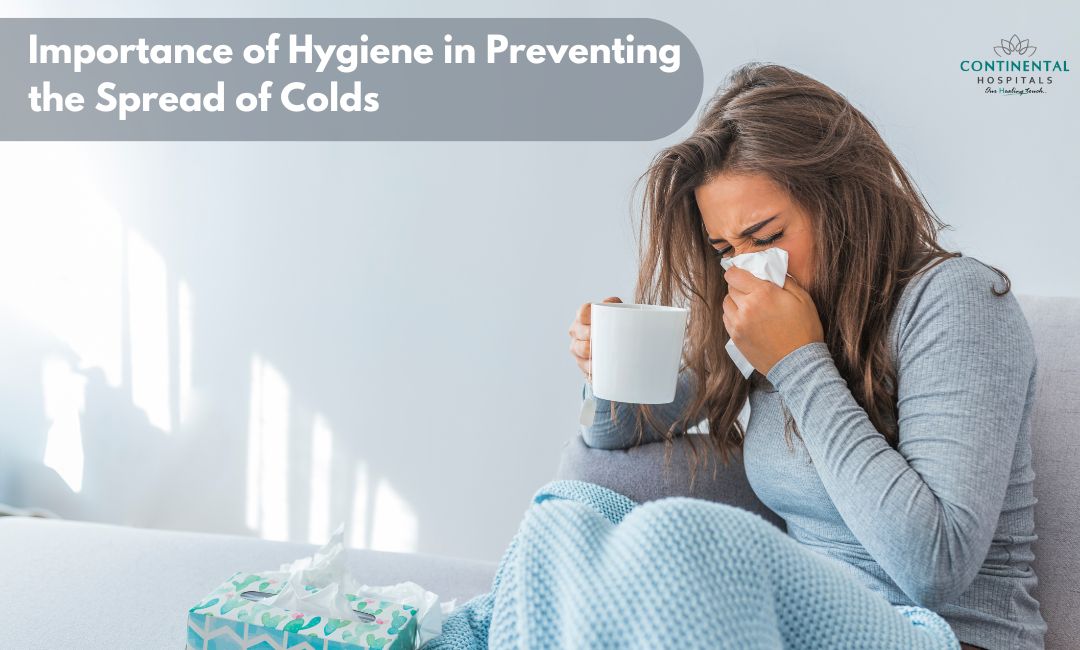Colds, despite being common, can disrupt our daily lives significantly. From sniffles and sneezes to fatigue and fever, they come with a host of uncomfortable symptoms. However, what many people may not realize is that colds are highly contagious and can spread rapidly, especially in environments where hygiene practices are lacking. In this blog post, we'll delve into the importance of hygiene in preventing the spread of colds, exploring various strategies and habits that can help keep these pesky viruses at bay.
The Sneaky Spread of Colds: How Viruses Invade
Colds are caused by viruses, tiny invaders that can't survive on their own. They rely on hitching a ride on unsuspecting hosts to replicate and spread. The most common culprit for the common cold is a group of viruses called rhinoviruses, but there are over 200 other contenders!
Here's how these sneaky stowaways typically spread:
Airborne Transmission: When an infected person coughs or sneezes, they expel tiny droplets containing the virus. These droplets can linger in the air for a short time, and if you breathe them in, you might become infected.
Direct Contact: Cold viruses can live on surfaces for hours, sometimes even days. If someone with a cold touches a doorknob, light switch, or your favorite office chair, the virus can be transferred. Then, if you touch that same surface and then your eyes, nose, or mouth, you become a potential host.
🥗 Healthy Plate Challenge
🍽 Add Your Favorite Dish
Pick Your 6 favorite foods, eat, and see the results.Drag & drop foods onto your plate.
Drop Food Here
Once the virus enters your body, it can take hold and replicate in your respiratory system, leading to that all-too-familiar parade of symptoms: runny nose, sore throat, cough, and fatigue.
Common Cold Symptoms
Runny or Stuffy Nose: One of the most common symptoms, caused by inflammation of the nasal passages.
Sneezing: Often accompanies a runny or stuffy nose.
Sore Throat: Can range from mild irritation to significant discomfort.
Cough: Usually starts as a dry cough and may progress to a productive cough with mucus.
Mild Body Aches: Some individuals may experience mild muscle aches or headaches.
Fatigue: Feeling tired or lethargic is common, especially in the early stages.
Mild Fever: Some people may develop a slight fever, although it's not as common in adults as in children.
Watery Eyes: Irritation of the eyes can cause tearing or watering.
Seek consultation from a physician to gain further insight into preventing colds.
Role of Hygiene in Preventing Cold:
Hygiene plays a crucial role in preventing the spread of colds. By adopting good hygiene practices, individuals can significantly reduce their risk of catching a cold and spreading it to others. Here are some key hygiene practices that can help:
Handwashing:
One of the most effective ways to prevent the spread of colds is by washing hands regularly with soap and water. Proper handwashing involves scrubbing the hands for at least 20 seconds, making sure to clean between the fingers, under the nails, and the back of the hands. Handwashing should be done after coughing, sneezing, using the restroom, and before eating or preparing food.
Use of Hand Sanitizer:
When soap and water are not available, using an alcohol-based hand sanitizer can help kill viruses and bacteria on the hands. It's essential to choose a hand sanitizer with at least 60% alcohol content and to cover all surfaces of the hands thoroughly until they are dry.
Respiratory Hygiene:
Practicing good respiratory hygiene is essential in preventing the spread of colds. This includes covering the mouth and nose with a tissue or the elbow when coughing or sneezing to prevent droplets from spreading into the air. Used tissues should be disposed of immediately and hands washed afterward.
Cleaning and Disinfecting:
Frequently touched surfaces such as doorknobs, light switches, and countertops can harbor cold viruses and contribute to their spread. Regularly cleaning and disinfecting these surfaces with an appropriate disinfectant can help kill germs and prevent transmission.
Avoiding Close Contact:
Avoiding close contact with individuals who have cold symptoms can help reduce the risk of catching a cold. If possible, maintain a distance of at least six feet from anyone who is coughing or sneezing.
Stay Home When Sick:
Lastly, it's crucial for individuals who are feeling unwell to stay home from work, school, or social gatherings to prevent the spread of illness to others. Resting at home not only helps the individual recover faster but also reduces the risk of spreading the virus to colleagues, classmates, or friends.
In conclusion, good hygiene practices are instrumental in preventing the spread of colds. By incorporating habits such as regular handwashing, respiratory etiquette, and surface cleaning into our daily routines, we can significantly reduce our risk of catching a cold and spreading it to others. Ultimately, practicing good hygiene is not only beneficial for our own health but also for the well-being of our communities. So let's all do our part in promoting hygiene and keeping colds at bay.
Seek consultation from a physician to gain further insight into preventing colds.
Related Blog Articles:
1. Staying Healthy in the Rainy Season
2. Influenza (Flu) in Children
3. Importance of Flu Vaccines: Myth vs. Fact
.webp)














